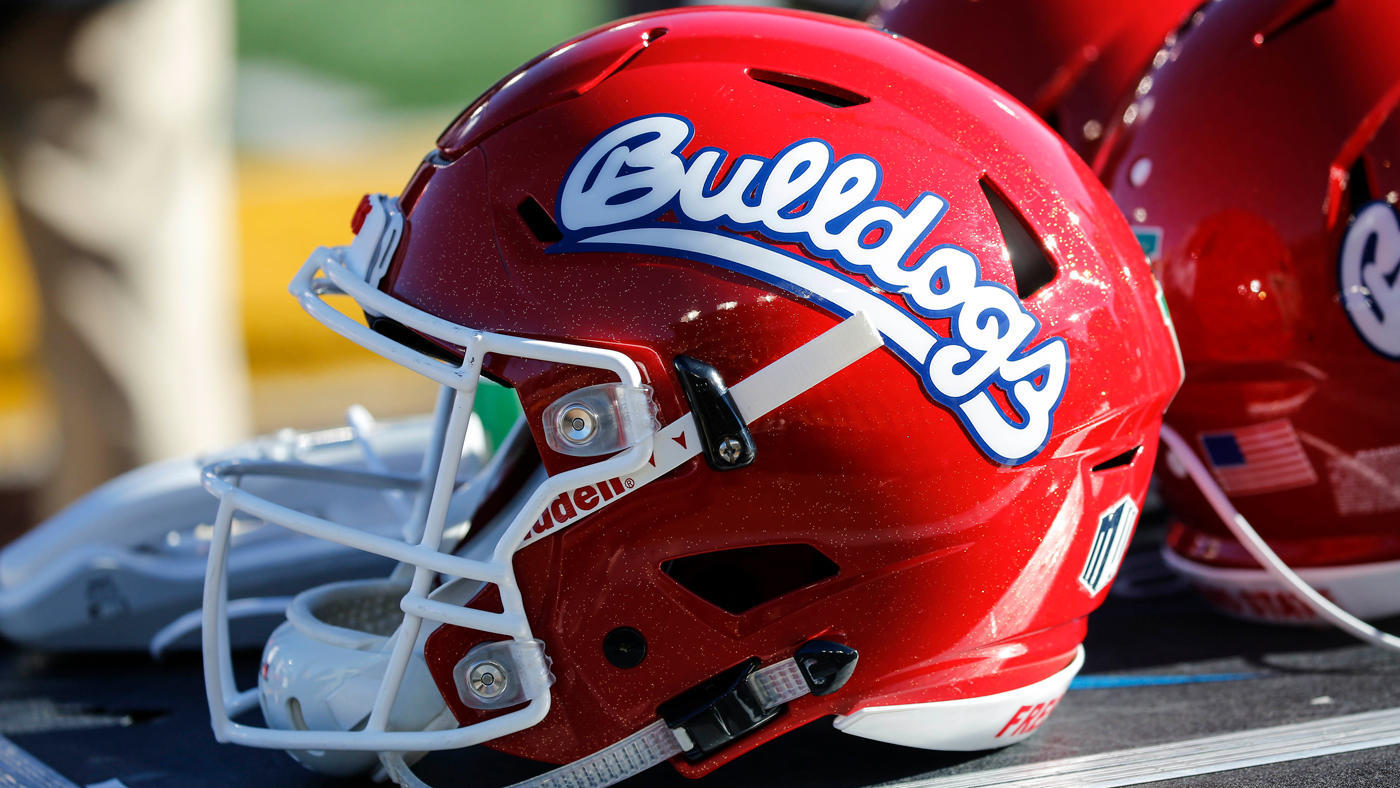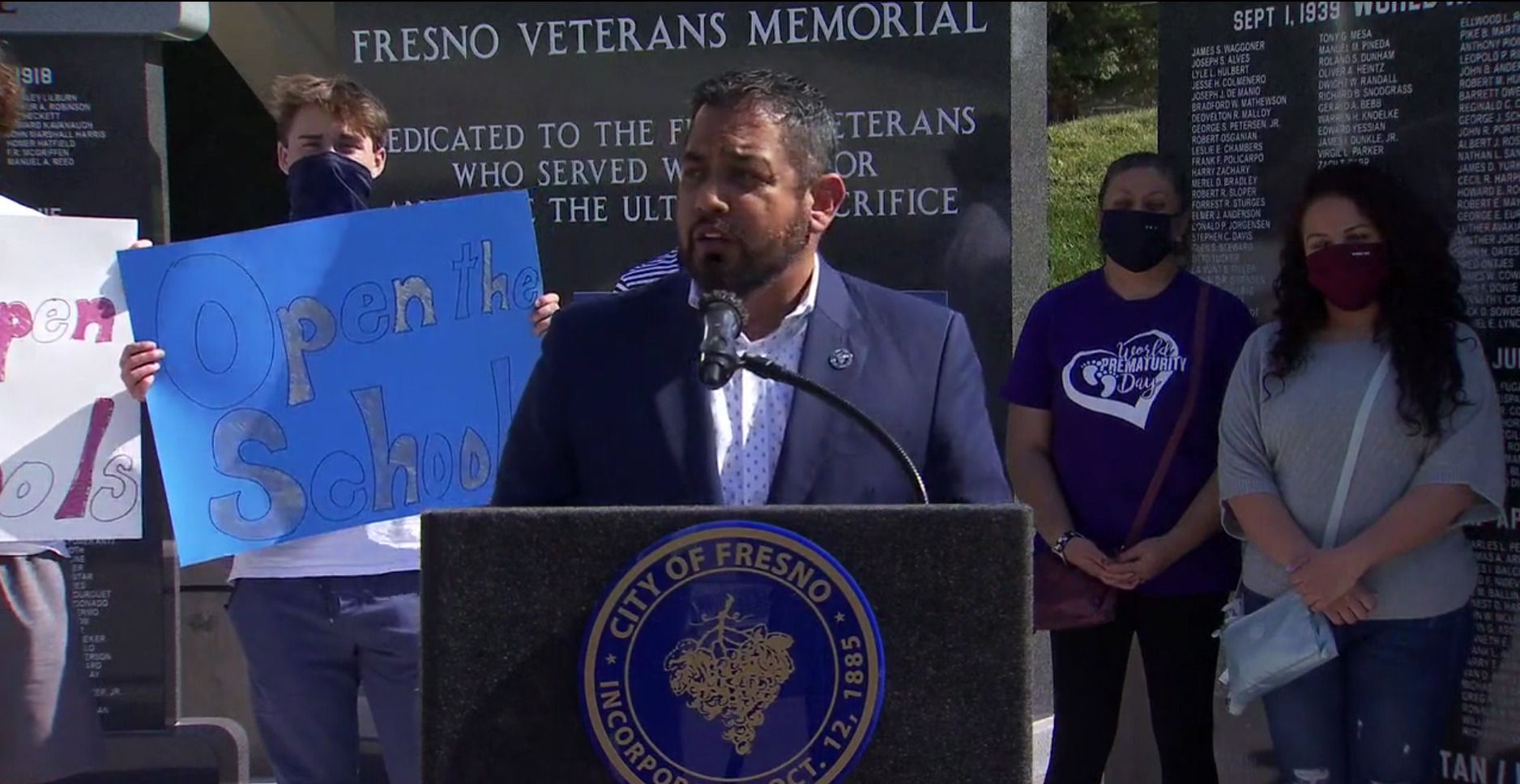City Hall is trying to figure out how big of a dent the high-speed rail (HSR) project will put in Fresno’s aquifer.
Steve Brandau is trying to figure out how big of a dent the bullet train’s water-guzzling will put in the wallets of Fresno ratepayers.
The odd thing is that City Hall has no clue. But city officials as well as District 2’s Council Member aim to find out.
Brandau, in particular, fears construction of high-speed rail through town will soak up huge amounts of Fresno’s water, then leave ratepayers bearing all the blame if sustainable groundwater levels fall to a level that draws Sacramento’s ire.
“High-speed rail never has to be held accountable for the impacts it creates,” Brandau told me on Wednesday.
Brandau is no friend to the bullet train. He recently received national attention when he was quoted on highway billboards as saying, “Governor, put our water before your train!” The billboard included a thumb’s up with the word “dam” and a thumb’s down with the word “train.”
The billboard got under the skin of Gov. Jerry Brown, whose office last year issued a statement to ABC30 saying both water storage and modernized transportation are administration priorities.
Bottom line: With his worry about water usage for the train system’s construction, Brandau is hitting an overlooked policy issue.
Construction on the first phase of the bullet train project is finally gearing up. Anyone driving along G Street in Southwest Fresno can see for him or herself.
HSR officials back in February 2012 issued a 32-page “technical memorandum” on water usage along the Merced-to-Fresno section.
Construction of the section “will result in a net decrease in annual water consumption to only 9% of the current water usage along the project footprint,” the memo stated.
Operation and maintenance of the bullet train at final build-out “will result in a net decrease of water usage over existing water usage within the project footprint to only 1.5% of the current water usage,” the memo stated.
But that was more than four years ago. A lot has happened since then.
For starters, just about everyone who isn’t a bullet-train fanatic has come to question HSR’s ability to handle math calculations when it comes to money. I’m not saying such skeptics are anti-bullet train. I am saying lots of open-minded people now wonder if initial HSR estimates for the cost the entire bullet-train system were a bit too rosy.
Brandau wonders if the same might be true concerning water-consumption estimates during construction.
Second, back in February 2012 Fresno was looking at a rain season that had started out a little dry. “No worries,” we told ourselves. “Past winters had been good and wet. We’ll finish February on a wet note, get another March Miracle and be blessed with steady April showers.”
Not!
The 2011-2012 season was the first year in what turned out to be four-year drought of historic severity in California. Gov. Brown has been issuing emergency drought declarations left and right for what seems like eons.
Go ahead, Mr. and Mrs. Fresno – I dare you to water your outdoor roses on the wrong day. Big Brother will have a helicopter hovering over your backyard in a heartbeat.
Third, Gov. Brown and the legislature got together last year and passed the Sustainable Groundwater Management Act, or SGMA. Our Golden State has never seen anything like SGMA.
In short, SGMA means Sacramento wants Big Computers to keep track of every gallon we suck out of the aquifer. Regulators will regulate every gallon sucked out of the aquifer. Cities and regions that suck up too much groundwater will suffer big penalties.
Fourth, the Valley’s air remains among the worst of any region in America.
Fifth, there’s the “Concrete Yard.” The Concrete Yard is at the corner of G and Divisadero streets, across from the Union Pacific railroad tracks near the north end of Downtown’s Cultural Arts District.

Go by the corner of G and Divisadero sometime and look for yourself. I’m guessing it’s been awhile since Downtown Fresno has seen something quite like the Concrete Yard.
But the Concrete Yard serves as an excellent hint at the vast scale of the bullet-train construction project heading Fresno’s way.
Sixth, and last, there is Fresno City Hall. The City Council at the drop of a hat will hold a workshop on some aspect of the bullet-train project. But there’s never been a workshop in this new era of Climate Change and constant drought emergencies about what the bullet train project means to water consumption for things like dust control.
I’ve asked city officials over the past few days: Do you have an up-to-date report about water consumption during the bullet-train construction phase? Do you have a report about air quality challenges at the Concrete Yard? Do you have a report about what happens to our air quality if hundreds of water tankers make lots of round-trips to the Sewer Farm six miles west of town to get extracted water for the bullet-train construction project? Do you have a report that digs into whether the High-Speed Rail Authority ought to pay for this extracted water – water that’s in our aquifer because Fresno water customers paid their bills?
City officials don’t have any such reports.
I did learn a few tidbits.
- Caltrans is realigning Highway 99 from Ashlan Avenue to Clinton Avenue as part of the bullet-train project. Caltrans told the city that it would use extracted water from the Sewer Farm. Caltrans said it would make 50 to 80 round trips per week. The typical water truck holds 6,000 gallons. That means Caltrans could be using as much as 480,000 gallons (1.5 acre feet) of water per week just for its rather modest-sized project.
Extracted water is not drinking (or potable) water.
- High-speed rail Spokeswoman Toni Tinoco in an email said the project through Fresno so far has used 2,746,588 gallons of non-potable water, with 89,100 gallons going to dust control. Only 6,550 gallons of potable water have been used so far.
- Public Utilities Director Tommy Esqueda said the bullet-train folks so far have signed up for three hydrant meters. Such a meter is connected to a fire hydrant. The customer pays a standard rate for the water as it’s used. Hydrant water is potable water.
- Esqueda said the high-speed rail folks have also signed up for the special card that is needed to access the extracted-water filling station behind the Sewer Farm’s locked gate. He said the card hasn’t been issued yet. (I wonder where HSR got all the non-potable water used so far. And I find it hard to believe the Concrete Yard could have grown to such vast size while using just 89,100 gallons for dust control. Then again, maybe the HSR folks figure crushing all that old concrete doesn’t cause the kind of dust we need to worry about.)
Tinoco said HSR is committed to water conservation. She said the goal is to use recycled or extracted water whenever possible.
It’s been said that the best-made war plans never survive first contact with the enemy. The same appears to be true for the high-speed rail project’s collision with reality.
Brandau has lots of questions.
He wonders if the aggregate mounds at the Concrete Yard (or yards, as Phase 1 of the construction projects extends south to American Avenue and north far into Madera County) will pose air-quality and water-consumption challenges when we get into the summer months.
He believes the High-Speed Rail Authority should help pay for extension of the city’s purple-pipe (recycled water) system from the Sewer Farm to both the Roeding Park and Downtown neighborhoods. After all, Brandau says, HSR with its high-profile commitment to the use of non-potable water, figures to be the purple-pipe system’s single biggest customer.
He thinks City Hall should study whether to charge HSR for the extracted water at the Sewer Farm.
Most of all, Brandau is angry. He thinks high-speed rail is getting a regulatory pass on water consumption.
But if an entrepreneur wants to open a water-intensive business in Fresno, Brandau said, “he has to have a plan that identifies what he’s going to use down to the last gallon.”









“How big of a dent” Bad grammar, Mr. Hostetter. Not once but twice.
Who gives a crap about the editor missing the grammar error, great article overall. Thanks for the update. It is sad that our local news streams are not asking the question.
The entire project is a massive fiscal wreck run by politicial hacks whose only goal is to ruin the topography of the central Valley to achieve increased state debt and a new eye sore called “The Great San Joaquin Valley Wall”. This berm will be 10 to 15 feet high and 100 to 130 feet wide with no track or quantifiable utility. Go to YouTube derailhsr and see for yourself how unqualified the authority is. They are iteration # 2,013 and not even close project schedule time lines or even close to what the voters approved in 2008.